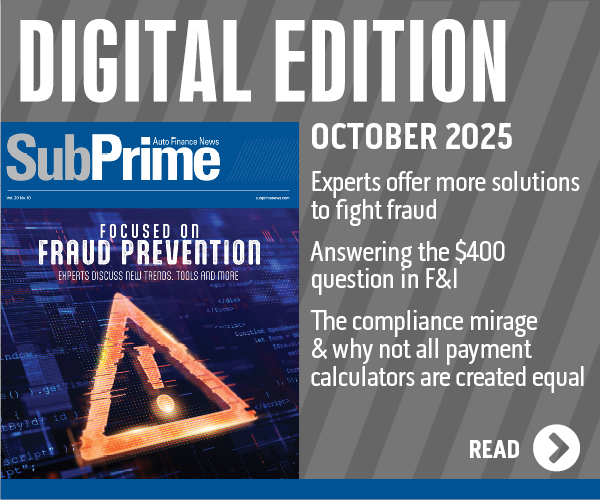TransUnion Sees 20-Percent Decline in Auto Delinquency Rates, but Predicts Upswing Ahead
By subscribing, you agree to receive communications from Auto Remarketing and our partners in accordance with our Privacy Policy. We may share your information with select partners and sponsors who may contact you about their products and services. You may unsubscribe at any time.
CHICAGO — The national 60-day auto delinquency rate dropped by almost 20 percent from the first to second quarter to 0.53 percent, TransUnion reported this week.
The year-over-year delinquency rate at the national level declined by 27.4 percent in the second quarter.
The company discovered several interesting quarterly trends:
Auto loan delinquencies were the highest in Mississippi and Louisiana at 1.05 percent and 0.97 percent, respectively. The lowest auto loan delinquency rates were found in North Dakota (0.28 percent), Michigan (0.29 percent) and Pennsylvania (0.32 percent).
The largest improvements in delinquency from the previous quarter were found in Vermont (a 41.4-percent decrease from 0.58 percent) and Connecticut (a 36.4-percent decrease from 0.55 percent).
Auto loan delinquency rates rose for only three states since the first quarter of 2010 — Rhode Island came in at 0.74 percent (a 29.8-percent increase), Utah at 0.71 percent (a 16.4-percent climb), and Montana at 0.38 percent (2.7-percent increase).
Subscribe to Auto Remarketing to stay informed and stay ahead.
By subscribing, you agree to receive communications from Auto Remarketing and our partners in accordance with our Privacy Policy. We may share your information with select partners and sponsors who may contact you about their products and services. You may unsubscribe at any time.
Average auto debt nationally rose quarter-over-quarter from $12,501 to $12,643. Year-over-year, auto debt increased by 1.13 percent in the second quarter.
Washington, D.C. held the largest average auto debt burden at $15,625, followed by Wyoming at $14,534. The lowest average auto debt was in Nebraska at $11,118.
The regions with the steepest quarterly increases in average auto debt as a percentage were North Dakota (up 5.1 percent), Washington, D.C. (up 4.8 percent) and South Dakota (up 3.2 percent).
Meanwhile, New Jersey experienced the sharpest drop in average auto debt (down 1.3 percent), followed by Nevada (down 0.79 percent).
On a year-over-year basis, national bank auto originations increased by the largest margin since the recession began in late 2007 at 18.7 percent, according to TransUnion.
Washington, D.C., apparently led all other areas in showing an increase in auto originations by 55.4 percent since the second quarter 2009. On a regional basis, only one state (Hawaii) showed a drop in year-over-year originations.
"The national trend we are seeing continues to point to a clear improvement in payment behavior. Although part of the reason for the turnaround in delinquency rates is the influx of new, lower risk loans as we have noted before, consumers do not see a quick fix to the short-term economic and employment situation and are focusing their attention instead on savings and lower consumption of discretionary goods," explained Peter Turek, automotive vice president for TransUnion's financial services group.
"This movement toward fiscal responsibility is reflected in year-over-year results as auto delinquency rates now have dropped 27.4 percent since second quarter 2009 — the largest decline since the summer of 2001. On a state-level basis, 46 states experienced a drop in their quarter-to-quarter delinquency rates, while only three states showed an increase on a year-over-year basis," he continued.
Looking ahead Turek said his company sees the 60-day delinquency rate continuing to move higher through the fourth quarter.
"Since the beginning of the recession, TransUnion's national and state forecasting models have tracked how the national 60-day auto delinquency rates are impacted by economic factors such as per capita disposable income, interest rates for new car loans, unemployment rates and new-vehicle registrations." Turek highlighted.
"These econometric models are continuing to hold up well, as they predicted a significant a drop in this quarter's 60 day auto delinquency rate. Based on our current economic assumptions, TransUnion believes that the 60-day auto delinquency rate will continue to show seasonal patterns, but gradually drift upward, reaching a rate of around 0.6 percent by the fourth quarter of this year," he concluded.


